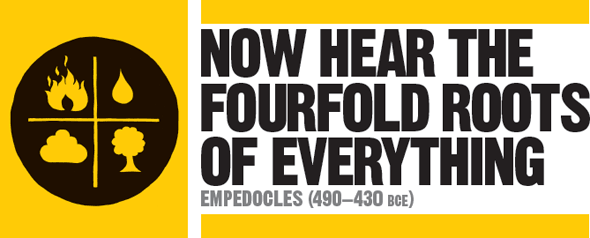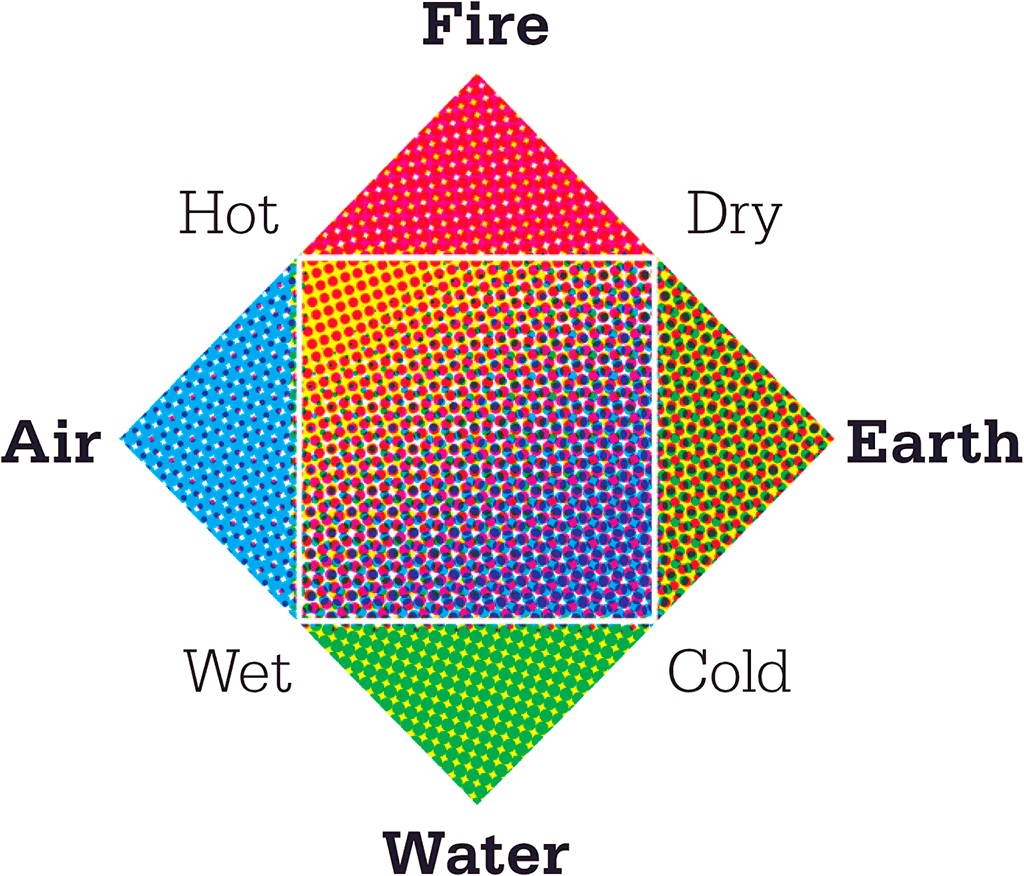
IN CONTEXT
Chemistry
c.585 BCE Thales suggests the whole world is made of water.
c.535 BCE Anaximenes thinks that everything is made from air, from which water and then stones are made.
c.400 BCE The Greek thinker Democritus proposes that the world is ultimately made of tiny indivisible particles – atoms.
1661 In his work Sceptical Chymist, Robert Boyle provides a definition of elements.
1808 John Dalton’s atomic theory states that each element has atoms of different masses.
1869 Dmitri Mendeleev proposes a periodic table, arranging the elements in groups according to their shared properties.
The nature of matter concerned many ancient Greek thinkers. Having seen liquid water, solid ice, and gaseous mist, Thales of Miletus believed that everything must be made of water. Aristotle suggested that “nourishment of all things is moist and even the hot is created from the wet and lives by it.” Writing two generations after Thales, Anaximenes suggested that the world is made of air, reasoning that when air condenses it produces mist, and then rain, and eventually stones.
Born at Agrigentum on the island of Sicily, the physician and poet Empedocles devised a more complex theory: that everything is made of four roots – he did not use the word elements – namely earth, air, fire, and water. Combining these roots would produce qualities such as heat and wetness to make earth, stone, and all plants and animals. Originally, the four roots formed a perfect sphere, held together by love, the centripetal force. But gradually strife, the centrifugal force, began to pull them apart. For Empedocles, love and strife are the two forces that shape the Universe. In this world, strife tends to predominate, which is why life is so difficult.
This relatively simple theory dominated European thought –which referred to the “four humours” – with little refinement until the development of modern chemistry in the 17th century.

Empedocles saw the four roots of matter as two pairs of opposites: fire/water and air/earth, which combine to produce everything we see.
See also: Robert Boyle • John Dalton • Dmitri Mendeleev